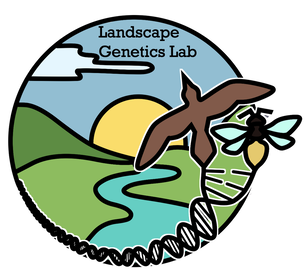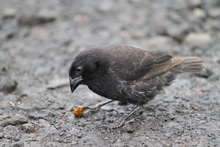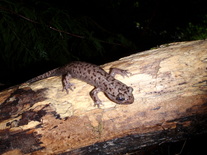Why landscape genetics?
The world's ecosystems are confronted with rapid and dynamic changes in land use and climate. These environmental changes have profound consequences for the ability of species to persist and adapt. They are causing species to shift their ranges, novel biological invasions or disease threats, which can alter species interactions and the evolutionary trajectories of species within ecosystems.
What do we do?
Combined with field-collected spatial and ecological data, we use genomics sequencing approaches (e.g. RADseq, RNAseq, whole genome) to address the effects of environmental change on gene flow and local adaptation in natural populations. This approach is often referred to as landscape genetics/genomics (though encompasses seascape, waterscape, and even airscape), and allows us to look at environmental effects on genetic connectivity and evolutionary processes. Our research aims to inform how we manage species' connectivity and genetic diversity. This may involve species of conservation concern, or invasive species and pests. Using these approaches, we can test predictions about land-use and climate change effects on species' genetic diversity and their adaptive capacity. In doing so, we gain insights into the roles of gene flow, environment, ecological variables and local adaptation in driving evolution.
What's happening?
The Landscape and Evolutionary Genetics Lab at Macquarie University conducts research on a diversity of study systems, from native and introduced European bumblebees, damselflies in Sweden, grasshoppers in Australia, soapberry bugs, and host-parasite interaction in the famous Darwin's finches on the Galapagos Islands. Previous work has included landscape genetics of giant salamanders in North America, and of koalas in south-east Queensland.
The world's ecosystems are confronted with rapid and dynamic changes in land use and climate. These environmental changes have profound consequences for the ability of species to persist and adapt. They are causing species to shift their ranges, novel biological invasions or disease threats, which can alter species interactions and the evolutionary trajectories of species within ecosystems.
What do we do?
Combined with field-collected spatial and ecological data, we use genomics sequencing approaches (e.g. RADseq, RNAseq, whole genome) to address the effects of environmental change on gene flow and local adaptation in natural populations. This approach is often referred to as landscape genetics/genomics (though encompasses seascape, waterscape, and even airscape), and allows us to look at environmental effects on genetic connectivity and evolutionary processes. Our research aims to inform how we manage species' connectivity and genetic diversity. This may involve species of conservation concern, or invasive species and pests. Using these approaches, we can test predictions about land-use and climate change effects on species' genetic diversity and their adaptive capacity. In doing so, we gain insights into the roles of gene flow, environment, ecological variables and local adaptation in driving evolution.
What's happening?
The Landscape and Evolutionary Genetics Lab at Macquarie University conducts research on a diversity of study systems, from native and introduced European bumblebees, damselflies in Sweden, grasshoppers in Australia, soapberry bugs, and host-parasite interaction in the famous Darwin's finches on the Galapagos Islands. Previous work has included landscape genetics of giant salamanders in North America, and of koalas in south-east Queensland.

Contact:
Dr Rachael Dudaniec
Senior Lecturer in Biological Sciences
School of Natural Sciences E8A374
Macquarie University
Sydney, Australia
Email: [email protected]
Ph: +61 (2) 9850 8193
Pronouns: she/her
Dr Rachael Dudaniec
Senior Lecturer in Biological Sciences
School of Natural Sciences E8A374
Macquarie University
Sydney, Australia
Email: [email protected]
Ph: +61 (2) 9850 8193
Pronouns: she/her




